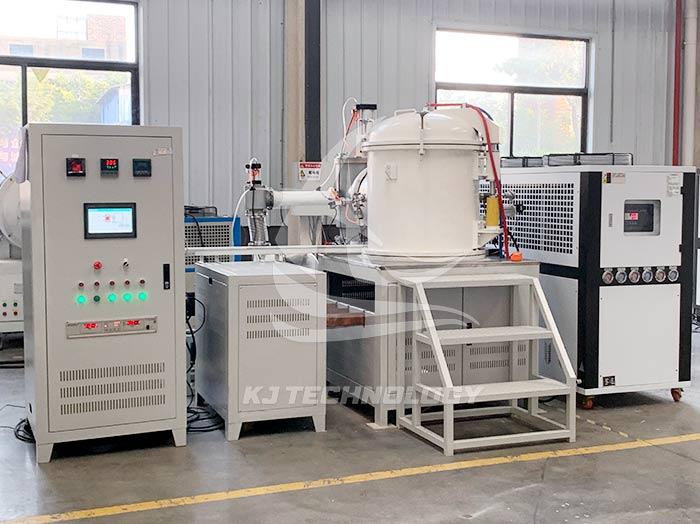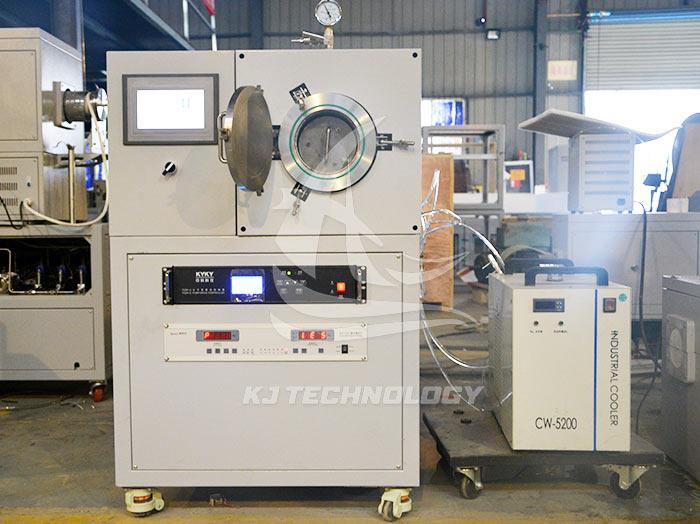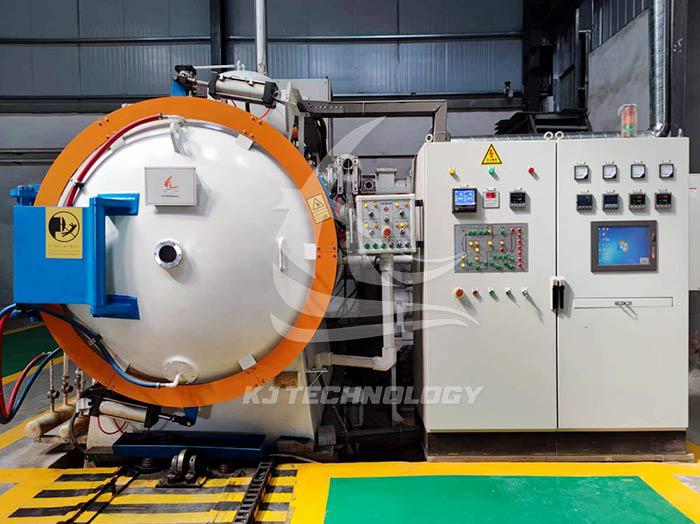After the vacuum degree of the high vacuum and high temperature muffle furnace reaches a certain value, it cannot be pumped up
 09-16-2025 Author: KJ technology
09-16-2025 Author: KJ technology
After the vacuum degree of the high vacuum and high temperature muffle furnace reaches a certain value, it cannot continue to increase, which may be caused by vacuum pump failure, system leakage, material venting, cooling system problems, or instrument errors. The following are the specific reasons and troubleshooting methods:
1. Vacuum pump malfunction
Pump oil contamination or insufficient: Pump oil contamination, insufficient or too thin can affect the pumping efficiency of the vacuum pump. The vacuum pump should be cleaned, replaced with new vacuum pump oil, and ensure sufficient pump oil.
Poor or damaged operation of vacuum pump: The vacuum pump may malfunction due to overheating, expansion of components causing small gaps, or improper cleaning leading to debris entering the oil. It is necessary to check whether the power supply is normal, strengthen the cooling of the pump, and repair or replace damaged vacuum pump parts.
The pumping capacity of the pump decreases: the diffusion pump oil may be contaminated, oxidized, or poorly sealed in the front stage pipeline, resulting in insufficient pumping oil, which may lead to a decrease in the pumping capacity of the pump. The contaminated pump oil should be checked and replaced to ensure good sealing of the front-end pipeline, and the pump oil should be replenished.
2. System leakage
External leakage:
Aging, corrosion or damage of seals: Seals that have aged or ruptured should be inspected and replaced to ensure good sealing.
Loose pipeline connections: Pipeline connections, solenoid valves, pipe joints, etc. should be inspected and repaired or replaced.
Valve leakage: The valve should be inspected, repaired or replaced.
Internal leakage:
Internal leakage often occurs on equipment with water cooling points: if the pumping speed of the mechanical pump is significantly low, the vacuum gauge reading is low, the mechanical pump oil quickly emulsifies, and the iron-based components in the vacuum chamber are significantly corroded, internal leakage may exist. The cavity should be cleaned first, and then the cooling water should be supplied. Carefully check if there are any wet points in the water supply pipeline, which are the leakage points.
Detection method: For larger leakage points, the flame method can be used. Based on the principle that airflow can cause the flame to deviate, a vacuum is first drawn, and a candle or lighter is used to gradually search near the suspicious point. If the flame deviates towards the leakage point, the leakage point can be found. Internal leakage needs to be investigated from different vacuum working areas. After the vacuum system reaches a certain pressure value, the winding and evaporation systems should be started separately, and the reading of the vacuum gauge should be observed for a brief decrease before climbing to preliminarily determine the direction of the internal leakage point.
3. Material deflation
Moisture absorption on the inner wall of the furnace shell: In humid environments, the inner wall of the furnace shell may absorb moisture, resulting in an inability to increase the vacuum degree. Oven treatment should be carried out to remove moisture from the inner wall.
Air release of insulation materials: Insulation materials used in vacuum furnaces generally include metals, carbon materials, and ceramic fibers. Among them, ceramic fibers have good insulation effects at low temperatures, but have a large suction capacity. Consider replacing insulation materials or conducting oven treatment.
Heat exchanger venting: The fin area of the heat exchanger is particularly large, and it is easy to release the adsorbed gas. Oven treatment should be carried out, and gas should be filled after baking, and the fan should be started for hot air circulation.
Gas release from fixtures and products to be brazed: The materials of fixtures and products to be brazed may release gas during furnace brazing, especially for products in automotive EGR systems that are assembled with Ni based brazing materials and enter the vacuum brazing furnace before drying. Ensure that the fixtures and products to be brazed are dry and free of moisture.
4. Cooling system issues
Insufficient cooling water supply: Insufficient cooling water supply may cause overheating of the vacuum pump or other components, affecting the pumping efficiency. Check whether the cooling water pipeline is unobstructed to ensure sufficient cooling water supply.
Blockage of cooling system: Blockage of cooling system may also cause overheating of vacuum pump or other components. Blockages should be cleared to ensure that the cooling system is unobstructed.
5. Instrument error
Inaccurate vacuum gauge readings: There may be errors in the readings of domestic vacuum gauges, especially when testing pressure rise rates. Calibration should be performed using an absolute quantity vacuum gauge such as a microphone, or resetting the vacuum gauge at atmospheric pressure to eliminate errors.
Temperature control instrument malfunction: Temperature control instrument malfunction may cause heating elements to malfunction, affecting vacuum degree. The working condition of the temperature control instrument should be checked, and if necessary, maintenance or replacement should be carried out.








